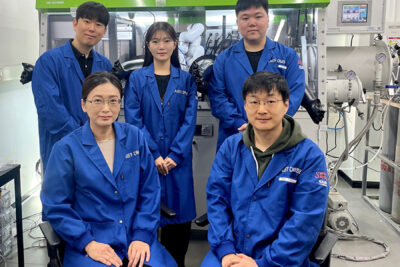PEM conducts research into battery cells with a high recycling content
According to the PEM announcement, the aim of the project, which is funded by the Ministry for the Environment, Nature Conservation and Transport of the State of North Rhine-Westphalia, is to investigate the production and functioning of cells with a previously unachieved proportion of more than 80 per cent recycled material. This is happening against a very specific backdrop: according to PEM, in order to comply with the EU Battery Regulation’s minimum recycling quotas for cathode active material (CAM), it is ‘essential’ to reintroduce recycled materials into battery production.
PEM Director Professor Achim Kampker summed up the current state of research: “Recyclable components of lithium-ion battery cells have so far only been considered individually and have not been tested for their interaction in new batteries.” This is precisely what the Chair of Production Engineering of E-Mobility Components now wants to change. To this end, suppliers and process routes are to be selected along the entire battery value chain that meet the requirements for the respective battery materials and improve the carbon footprint.
The challenge here is often the purity of the recycled materials. The communication cites graphite as an example, stating that the anode material is ‘unattractive from secondary sources to date’. This is due to the deteriorated morphology of the active material at the end of its life, increased contamination, for example by binders, and technological and economic challenges. And the processing of recyclable graphite is said to be extremely cost-intensive, especially when compared to new material.
Currently, recycling projects tend to focus on CAMs because their raw materials are valuable. But even there, there are still unresolved issues in research. “The global battery industry already uses some recycled metal salts such as nickel and cobalt sulfate or lithium hydroxide, but the exact behavior of the materials in the battery cell – for example, aging, safety, and the necessary purity – is not fully known,” says PEM management member Professor Heiner Heimes.
In order to meet recycling quotas and achieve a sustainable circular economy, the inactive components of a battery cell will also have to be recycled in future – for example, the carrier foils of the active materials made of aluminium and copper, as well as the separator foil. “of the circular economy, it is also necessary to recycle inactive components. “While the recycling of most battery components is already technically possible, no battery cell has yet been manufactured that contains at least 80 per cent recycled content,” says Kampker. The ‘Kreislauf.IN.NRW’ project aims to achieve this and develop a scalable process route. The companies ‘NEUMAN & ESSER’, ‘Accurec Recycling’, ‘Iondrive EU’ and ‘Constantia Patz’ are involved from the industry side.
The research objectives for ‘Kreislauf. IN.NRW‘ include investigating interactions between process parameters in hydrometallurgical recovery and the material quality of recyclates (pCAM/CAM) and “developing reproducible synthesis processes for NMC materials from secondary raw materials with targeted control of particle morphology, stoichiometry and residual impurities.” The electrochemical performance of these materials will then be evaluated in order to derive “tolerance limits for impurities in recycled lithium, nickel, cobalt and manganese in comparison with primary raw materials.” The aim is to establish a scientifically sound database for linking process, material and performance parameters.
The project officially started on 1 October 2025 and is scheduled to run until 30 September 2028.
rwth-aachen.de (announcement), rwth-aachen.de (project page)
This article was first published by Sebastian Schaal for electrive’s German edition.





0 Comments